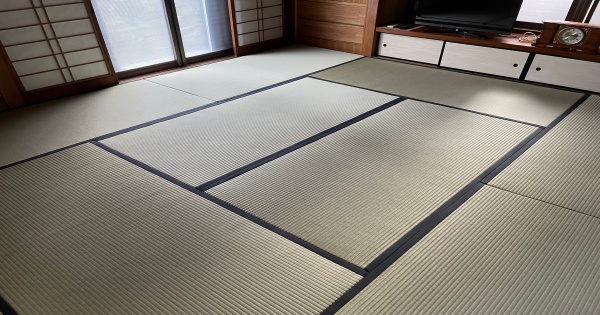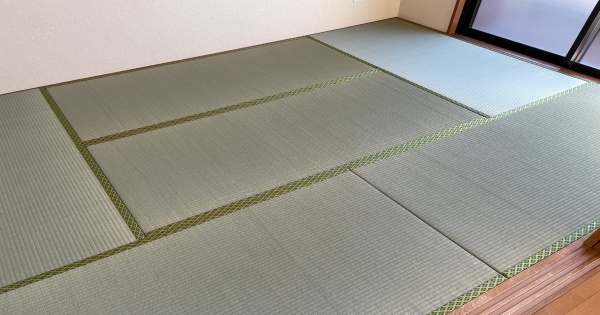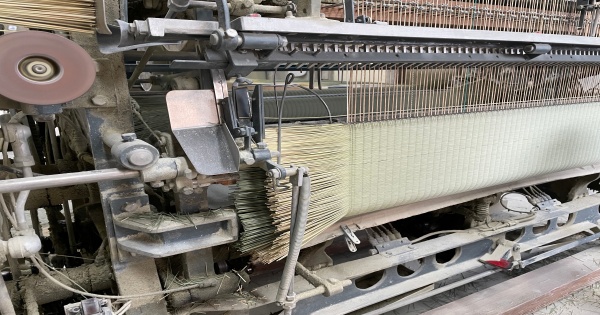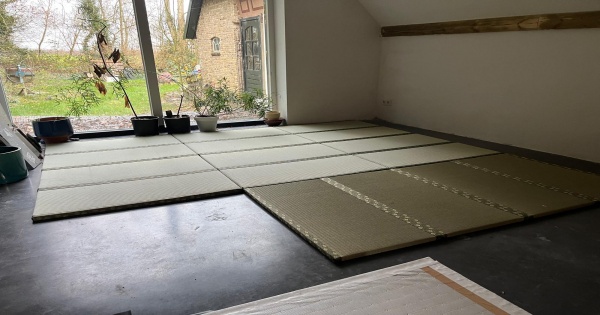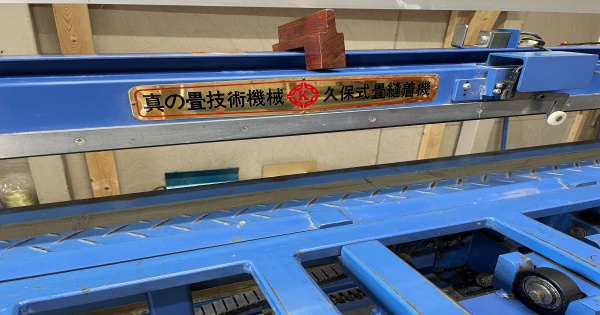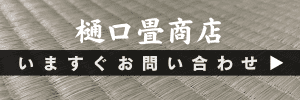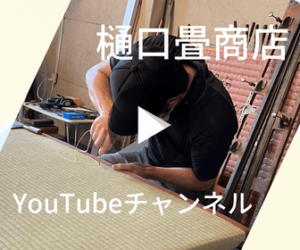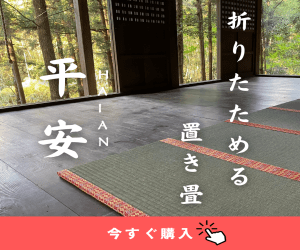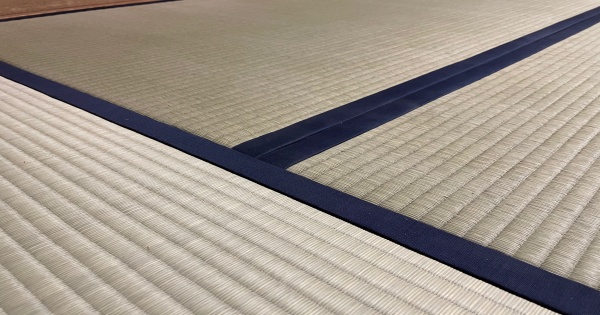
Tatami mats are traditional Japanese flooring mats, used by placing them on the floor. Due to their distinctive design and materials, tatami mats are widely recognized as symbols of Japanese culture and lifestyle. They consist of a surface layer called "tatami-omote," woven from the natural material igusa (rush grass), and an inner structure known as "tatami-doko," which can be made from compressed straw (wara-doko) sewn together, or compressed wood chips and insulation boards (kensho-doko).
History of Tatami
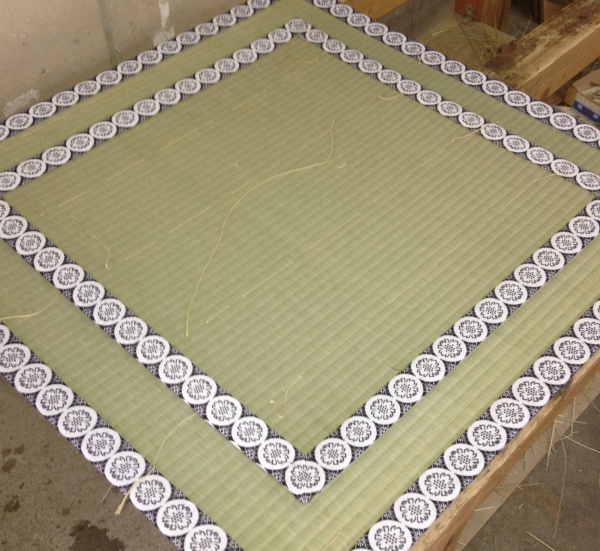
The history of tatami is very ancient, dating back to the Heian period (794-1185 AD). Initially, they were used as special bedding or seating for the imperial family and nobility. During the Muromachi period, the shoin-zukuri architectural style emerged, and samurai began using tatami to cover the floors. It is said that tatami became more widely used after the Azuchi-Momoyama period, influenced by the spread of the tea ceremony. By the Edo period (1603-1868 AD), tatami had spread to common households, and the manufacturing techniques also evolved. From the Meiji period onward, tatami were used in mixed Western-Japanese style interiors, leading to the creation of new tatami designs.
Materials Used in Tatami
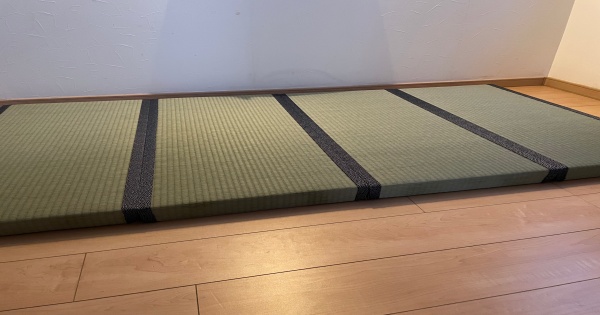
Tatami mats are primarily made from the following materials:
- Tatami-omote: The surface layer of tatami, known as tatami-omote, is woven from a plant called igusa. The natural scent and texture of igusa are some of the most distinctive features of tatami. In modern times, there are also tatami-omote made from resin or Japanese paper. These materials not only match Western designs but are also easier to ship overseas.
- Tatami-doko: The inner structure of tatami provides cushioning and durability. Traditionally, straw was used, but nowadays, the main materials for tatami-doko are insulation boards made from compressed wood chips, with layers of polystyrene or urethane foam sandwiched between them.
- Heri: The fabric that covers the edges of tatami mats, called "heri," adds decorative elements while enhancing the durability of the tatami. The design and materials of heri vary widely, significantly changing the atmosphere of the tatami. Historically, tatami edges symbolized rank and authority. This tradition remains in modern Japan, with some edge designs exclusively used by the imperial family.
Functionality of Tatami
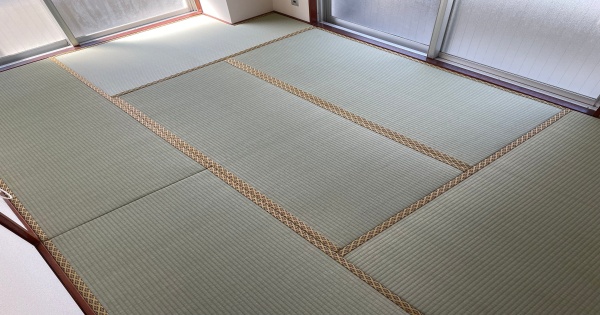
Tatami mats offer several functional benefits:
- Cushioning: Tatami’s soft cushioning reduces strain on joints and provides a comfortable walking surface.
- Humidity Control: Igusa absorbs and releases moisture, helping to regulate indoor humidity and maintain a comfortable environment.
- Insulation: Tatami provides excellent insulation, keeping floors cool in summer and warm in winter.
- Sound Absorption: Tatami absorbs sound, contributing to a quieter indoor environment.
Uses of Tatami
Tatami mats are used in various settings in Japanese homes and architecture:
- Living Rooms: Tatami flooring in living rooms creates a relaxing space for family and friends. The mats provide a comfortable surface for sitting or lying down.
- Bedrooms: Tatami in bedrooms offers a natural aroma and comfortable sleeping environment. Traditional Japanese futons can be placed directly on the tatami.
- Tea Rooms: Tatami is essential in tea rooms, where people sit on the mats during tea ceremonies. The mats’ tranquility and beauty symbolize the spirit of tea culture.
- Yoga and Meditation Spaces: Tatami's soft texture and natural scent create an ideal environment for yoga and meditation, enhancing relaxation and focus.
Pros of Tatami
- Comfort: Tatami’s cushioning and softness reduce strain on joints, providing a comfortable living space.
- Natural Scent: Igusa’s natural scent has a relaxing effect, creating a pleasant atmosphere.
- Humidity Control: Tatami helps regulate indoor humidity, maintaining a comfortable environment.
- Versatility: Tatami can be used in living rooms, bedrooms, tea rooms, and yoga spaces, with various designs to match different interiors.
Cons of Tatami
- Maintenance: Tatami requires regular cleaning and humidity control, which can be time-consuming.
- Durability: Over time, igusa may deteriorate, necessitating replacement. High humidity can lead to mold and mites, requiring careful management.
- Cost: High-quality tatami mats can be relatively expensive, especially if they are custom-made. Additionally, shipping tatami mats overseas can be costly due to their large size, often requiring special cargo handling. To address this issue, Higuchi Tatami Store has developed foldable tatami mats. Since these mats can be folded for shipping, transport costs can be reduced regardless of their dimensions or materials.
For more details, please refer to this blog article:https://phkkoomde.com/tatami/20247262/
nclusion
Tatami mats, traditional Japanese flooring, are highly valued for their beauty and functionality. Understanding the history, materials, functionality, and uses of tatami can enhance appreciation for these unique mats. Tatami offers a comfortable and natural living space, suitable for various settings such as living rooms, bedrooms, tea rooms, and yoga spaces.
For those interested in Japanese design, tatami mats are a compelling choice, combining aesthetic appeal with practical benefits. When considering tatami, it's essential to weigh the pros and cons to make an informed decision that suits your lifestyle. Embracing tatami in your home allows you to experience a piece of Japanese culture while enjoying a comfortable and pleasant living environment.
For more detailed information or to consult about purchasing tatami, please contact Higuchi Tatami Store. We promise to provide optimal tatami mats tailored to your needs and ensure your satisfaction with our services.
Contact Higuchi Tatami Store:https://phkkoomde.com/profile/contact/
